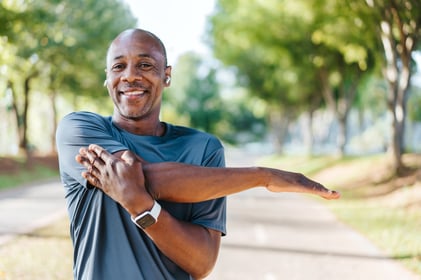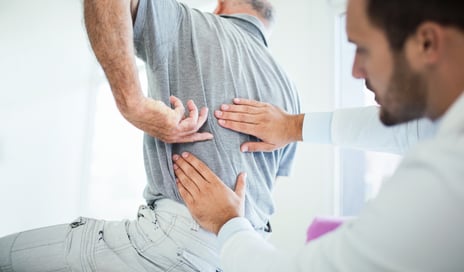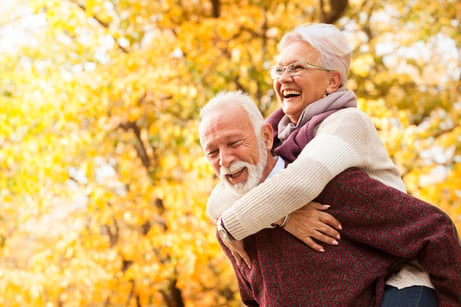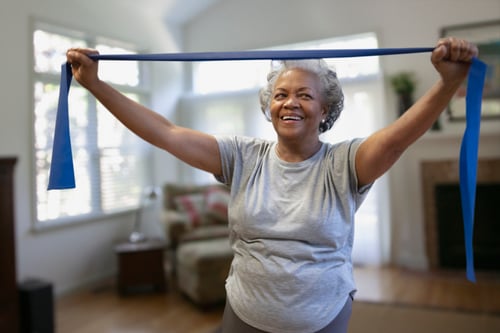 Sleep is one of the most powerful tools we have for staying healthy as we age. But for many of us, a good night’s sleep can be hard to come by. Changes in sleep patterns are a normal part of aging, but the good news is there are simple changes you can make to your routine to improve your sleep quality. Finding ways to move your body during the day is a great place to start.
Sleep is one of the most powerful tools we have for staying healthy as we age. But for many of us, a good night’s sleep can be hard to come by. Changes in sleep patterns are a normal part of aging, but the good news is there are simple changes you can make to your routine to improve your sleep quality. Finding ways to move your body during the day is a great place to start.
Why Movement Matters for Sleep
When you engage in physical activity, your body uses energy and experiences a slight rise in core temperature. As you cool down afterward, your body signals that it’s time to rest — helping you fall asleep faster. Exercise also reduces stress hormones, improves mood, and helps regulate your circadian rhythm. This movement doesn’t need to be high-intensity — a little activity throughout the day can lead to deeper, more restorative sleep.
The Best Types of Movement for Better Sleep
- Walking: A simple, low impact walk outside, through hallways, or on a treadmill is a great option.
- Stretching or Yoga: Gentle stretching can relieve muscle tension and help you relax.
- Strength Training: Building strong muscles supports mobility and helps reduce those nighttime aches and pains that can keep you awake.
- Group Fitness Classes: Exercising with friends keeps you motivated and helps you stay social. This can improve your mood and lower stress.
Timing Your Exercise
When planning your exercise, try to move your body earlier in the day or at least a few hours before bedtime. Evening exercise can still be beneficial but avoids very intense activity right before bed — it might leave you feeling too energized to fall asleep. For example – take a walk after dinner, stretch while talking on the phone, or do chair exercises while watching TV.
Pair Movement with a Relaxing Evening Routine
Once you’ve added movement to your day, set yourself up for a great night’s sleep by creating a calm environment before bed. Dim the lights, avoid screens for 30 minutes, and try a few minutes of deep breathing or gentle stretching to let your body know it’s time to wind down.
A more restful night often starts with an active day. Find small ways to add movement into your routine. Start with something simple — whether it’s a short walk, some stretching, or a fun fitness class — and you’ll enjoy deeper, more restorative sleep and wake up ready to make the most of tomorrow.


 Staying active and making healthy choices is important, especially as we get older. Strength training and maintaining a healthy body composition can make a big difference in how we move, look, and feel as we age.
Staying active and making healthy choices is important, especially as we get older. Strength training and maintaining a healthy body composition can make a big difference in how we move, look, and feel as we age.
 I call this the "Awakening." Simply put, you are realizing that your body is feeling the wear and tear of life to this point. It’s that realization that at 40 years old, you shouldn't move through life like you're 20. The point at which an individual becomes self-aware of these aches and pains varies from person to person. Some people don’t have substantial damage to their body and can probably make it well past their 20s before being bothered. My experience, like a lot of other athletes I've talked to, is one where we start to feel the damage a bit earlier than expected. It's like a car that is supposed to be driven ten thousand miles a year but is instead driven twenty thousand. The good part of the awakening process is that it is your call to action!
I call this the "Awakening." Simply put, you are realizing that your body is feeling the wear and tear of life to this point. It’s that realization that at 40 years old, you shouldn't move through life like you're 20. The point at which an individual becomes self-aware of these aches and pains varies from person to person. Some people don’t have substantial damage to their body and can probably make it well past their 20s before being bothered. My experience, like a lot of other athletes I've talked to, is one where we start to feel the damage a bit earlier than expected. It's like a car that is supposed to be driven ten thousand miles a year but is instead driven twenty thousand. The good part of the awakening process is that it is your call to action!
 When you live with chronic pain, the only one who can know how much it hurts is you. Pain can be hard to describe because it’s both invisible and personal. If you can’t put into words how much pain you’re in or how it affects your life, your doctor, physical therapist or fitness trainer can’t prescribe the right treatment or exercises for you. Go through these questions to help you get the relief you need.
When you live with chronic pain, the only one who can know how much it hurts is you. Pain can be hard to describe because it’s both invisible and personal. If you can’t put into words how much pain you’re in or how it affects your life, your doctor, physical therapist or fitness trainer can’t prescribe the right treatment or exercises for you. Go through these questions to help you get the relief you need.  When we think of aging, some think about wrinkles, aches, and pains and the negative associations of the aging process. Yet there is so much more to aging! No, we cannot stop the aging process, but we can choose to live a healthy lifestyle. This is the time to do things you have never done and find enjoyment. Here are just a few things to consider when aging gracefully and living your best life!
When we think of aging, some think about wrinkles, aches, and pains and the negative associations of the aging process. Yet there is so much more to aging! No, we cannot stop the aging process, but we can choose to live a healthy lifestyle. This is the time to do things you have never done and find enjoyment. Here are just a few things to consider when aging gracefully and living your best life!
 Have you wanted to create a healthier lifestyle, but don’t quite know how to get there? Maybe you have tried before, but haven’t been able to stick to your goals? Or life has thrown you a curveball (hello COVID-19 lockdowns) and you got knocked off track. It can be hard to keep yourself motivated to make good decisions every single day. Instead of relying on self-discipline to make these changes, studies have found that taking those healthy goals and turning them into habits might be the most efficient way to enact the changes you want to see! Do you have any habits you want to add to your routine?
Have you wanted to create a healthier lifestyle, but don’t quite know how to get there? Maybe you have tried before, but haven’t been able to stick to your goals? Or life has thrown you a curveball (hello COVID-19 lockdowns) and you got knocked off track. It can be hard to keep yourself motivated to make good decisions every single day. Instead of relying on self-discipline to make these changes, studies have found that taking those healthy goals and turning them into habits might be the most efficient way to enact the changes you want to see! Do you have any habits you want to add to your routine?.jpg?width=385&name=GettyImages-482817556%20(1).jpg) The more we age, the less we move, and the more we start to take our health for granted, especially if we have been “healthy” for most of our lives. We often hear about the need to exercise more as we get older, but what about the nutrition aspect? Eating healthy foods is just as important as exercising. There are some good practices and tricks to maintaining a healthy diet and exercising plan as we age.
The more we age, the less we move, and the more we start to take our health for granted, especially if we have been “healthy” for most of our lives. We often hear about the need to exercise more as we get older, but what about the nutrition aspect? Eating healthy foods is just as important as exercising. There are some good practices and tricks to maintaining a healthy diet and exercising plan as we age.
.jpg?width=378&name=Senior%20dancing%20GettyImages-504735537%20(1).jpg)
